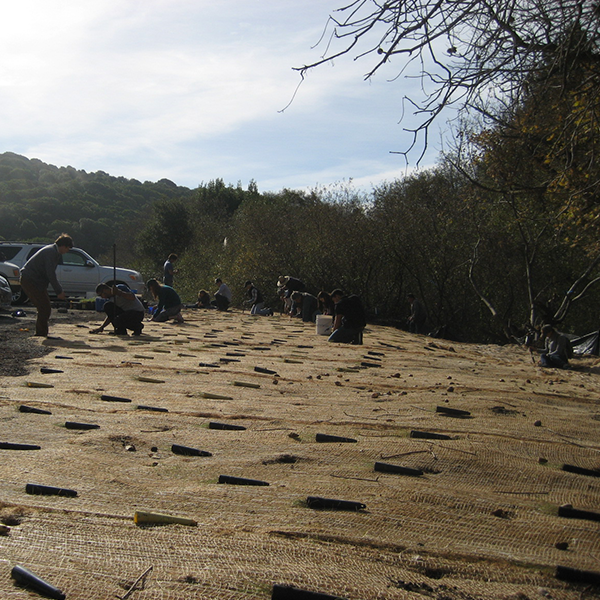News Contact:
Nicole Cruz
Office of the Superintendent/President
(415) 485-9508

KENTFIELD, CA—December 20, 2016—Industry-related agricultural development and general urban sprawl have seriously degraded the watersheds in West Marin over the last 100 years. Government agencies and nonprofit organizations, such as Salmon Protection and Watershed Network (SPAWN), are implementing ecological restoration plans for some of the disrupted watersheds.
For thousands of years, coho salmon have returned from the ocean to the freshwater streams where they were born. Their return has long been viewed as a bellwether of wild salmon health in the Bay Area and Central California. During the last 20 years, biologists have seen declining numbers of coho nests, which are traditionally used by experts to estimate salmon numbers.
This fall, students from Professor Fernando Agudelo-Silva’s Biology 112 class participated in a project that addressed recovery of several endangered species, including coho salmon. Working in disrupted watershed areas of Lagunitas Creek, College of Marin students planted seeds and seedlings along banks of streams where salmon spawn. The revegetation of the banks improves water quality for the hatching of salmon eggs and survival of young salmon.
Encouraging growth of vegetation along these banks helps bring the ecosystem back into balance and also gives students an experience in the field where they can apply their knowledge. According to Biology Professor Fernando Agudelo-Silva, these projects allow students to connect theory and practice. Perhaps more importantly, they are able to apply that learning to better understand the art of adjusting classroom theory to the field reality.
“They realize the practical use of theory learned in the classroom to a real-life situation that contributes to the survival of a special and endangered coho salmon population,” says Professor Agudelo-Silva. “They see that individuals can make a positive and concrete contribution to the restoration of ecosystems.”
Students also benefit from exposure to the different career paths they can pursue while earning their degree. Professor Agudelo-Silva reaches out to community organizations and groups that can assist the College in improving the learning experiences of its students.
The recent project with SPAWN was a positive experience for biology student Amin Al-Jamal.
“The accessibility and social nature of SPAWN’s citizen science endeavors create a really welcoming environment for aspiring scientists,” said Al-Jamal.
Professor Agudelo-Silva adds that this work experience gives students an advantage, making their applications stand out when they transfer or look for jobs. Getting students out of the classroom and into the field often leads to internships with various organizations and agencies such as SPAWN and the Marin Municipal Water District. This, in turn, assists students in making the transition from student to employed professional.
About SPAWN
SPAWN is a local, nonprofit organization initiated in 1997 as part of the Turtle Island Restoration Network. Working in West Marin, the organization seeks to protect endangered, wild coho salmon as well as the forests and watersheds they need to survive. Each year the organization engages hundreds of people to learn about the majestic endangered salmon, restore watershed habitat, raise native redwood trees, and study salmon health.
About the College—90 Years of Transforming Lives Through Education and Training
College of Marin is accredited by the Accrediting Commission for Community and Junior Colleges, Western Association of Schools and Colleges, 10 Commercial Blvd., Suite 204, Novato, CA 94949, (415) 506-0234, an institutional accrediting body recognized by the Council for Higher Education Accreditation and the U.S. Department of Education. Additional information about accreditation, including the filing of complaints against member institutions, can be found at www.accjc.org.
